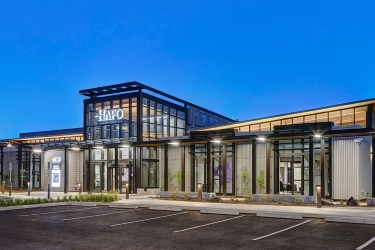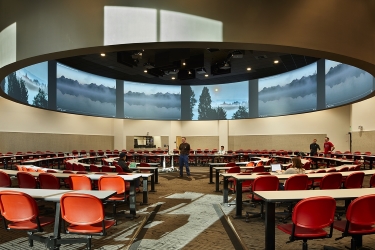|
Subscribe / Renew |
|
|
Contact Us |
|
| ► Subscribe to our Free Weekly Newsletter | |
| home | Welcome, sign in or click here to subscribe. | login |
Construction
| |
August 16, 2018
4 in-state projects win design-build awards
Four projects in the state won National Merit Awards from the Design-Build Institute of America, including two at WSU, one at Sea-Tac Airport and one in Vancouver.
They will join 25 others from around the country to compete for national awards and Project of the Year. Winners will be announced at the Design-Build Conference & Expo, Nov. 7-9 in New Orleans.
“This year's National Design-Build Project/Team Award winners prove beyond a shadow of a doubt that design-build is changing the way America builds and delivering impressive results in communities from coast to coast,” said DBIA Executive Director/CEO Lisa Washington in a news release.
Here are the local winners:
Educational Facilities
The Spark at WSU (Pullman)
The team on this $43 million project faced a tight budget, new university construction standards, a restricted site and rapidly evolving technology. The result was an 83,000-square-foot digital learning center that was finished early and under budget.
The Spark has a 250-seat circular learning hall, faculty innovation studio, hoteling office space, media studio with 3-D printers, cafe, student development studio and event space.
Here's the team: Washington State University, owner; Clark Construction Group, design-builder, project manager and general contractor; ZGF Architects, architect; AEI, engineer; Apollo Mechanical, specialty contractor; Vantage Technology Consulting Group, specialty consultant; and KPFF, civil and structural engineer.
WSU Elson S. Floyd Cultural Center (Pullman)
Honoring late WSU President Elson Floyd, this $12.64 million facility was designed to celebrate the cultural diversity of the campus and the history of the land.
The 16,000-square-foot center has four “cultural knowledge rooms” for forums that explore both the individuality and interconnectedness of cultures. Its organic shape and undulating roof mimic the natural flow of the site and the Palouse.
In order to avoid the cost of running steam to the center, which is at the edge of the campus, the design-build team installed a boiler. The team also moved landscaping and parking to avoid costly blasting of basalt rock that was discovered below the site.
Here's the team: Washington State University, owner; Absher Construction Co., design-builder, project manager and general contractor; GGLO, architect; PCS Structural Solutions, engineer; Apollo Mechanical, specialty contractor; Mimar Studio, specialty consultant; Cobra Roofing, key subcontractor; and KPFF, civil engineer.
Aviation
Alternate Utility Facility (Sea-Tac Airport)
The Alternate Utility Facility can provide power for the entire airport in the event of a catastrophic power loss from the local utility. The Port of Seattle envisioned a minimum of 20 megawatts of output and a future expansion up to 30 megawatts.
Mortenson Construction collaborated during the design-build process to provide the full 30-megawatt facility within the original $27.43 million budget and 12-month construction schedule. Mortenson also exceeded WMBE participation goals through teaming and procurement arrangements.
Here's the team: Port of Seattle, owner; Mortenson Construction, design-builder, project manager and general contractor; Patano Studio Architects, architect; Casne Engineering, engineer; Shinn Mechanical, specialty contractor; Hart Crowser Geotechnical Engineers, specialty consultant; Crown Technical Systems, key subcontractor; and KPFF, civil and structural engineer.
Commercial Buildings
HAPO Mill Plain branch (Vancouver)
HAPO's $8.14 million Mill Plain branch is the world's first credit union to pursue certification from the International Well Building Institute.
The certification requires that every aspect of design and construction support and enhance the wellbeing of the occupants. That required bringing in the general contractor, architect, Well consultant, and MEP and structural engineers at the early requirements documentation phase. Also, mechanical and electrical subcontractors were brought in at 50 percent design.
Here's the team: HAPO Community Credit Union, owner; Momentum Inc., design-builder, project manager and general contractor; ARC Architects, architect; Sazan, engineer; CompView, specialty contractor; and JR Merit, specialty consultant and key subcontractor.




